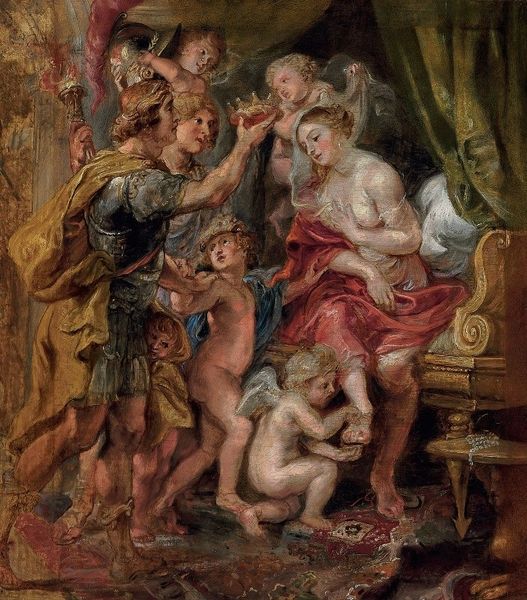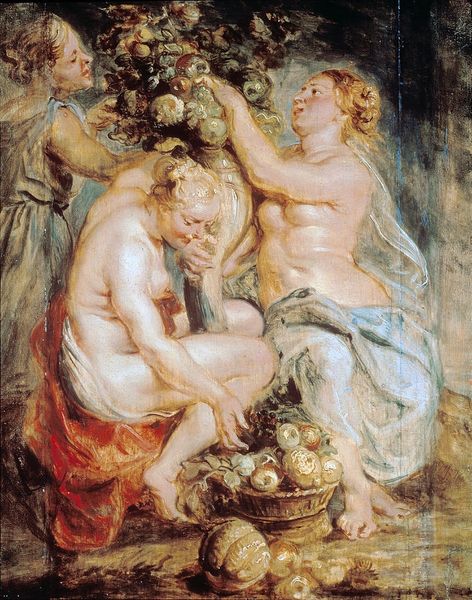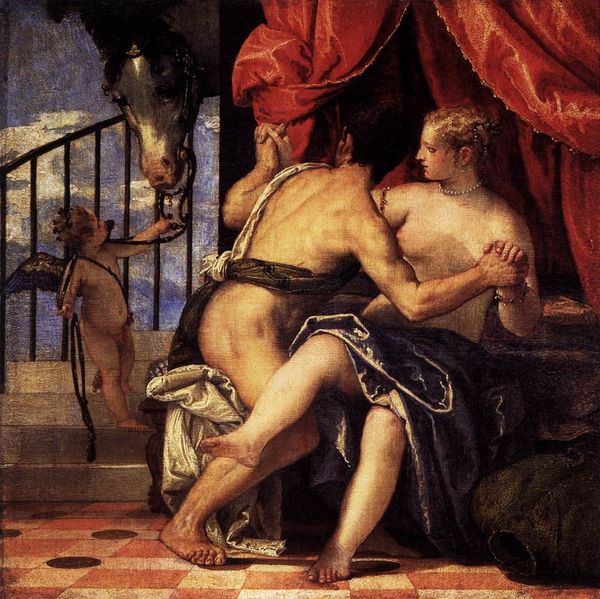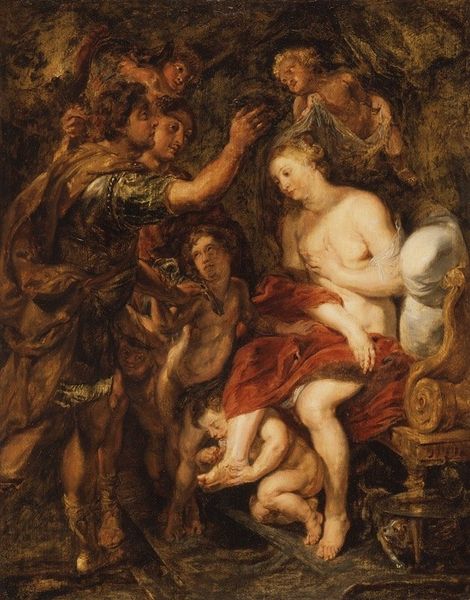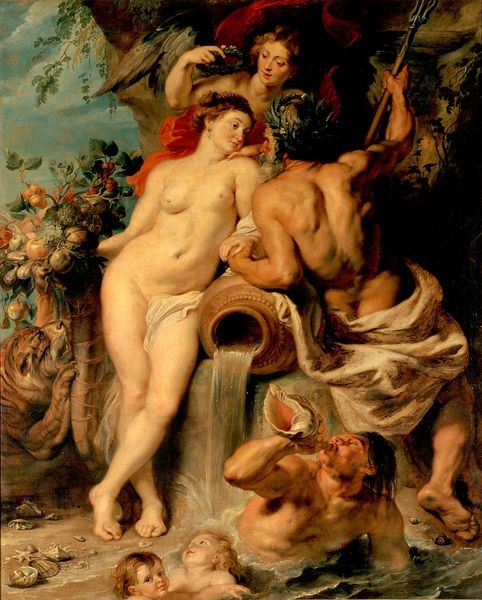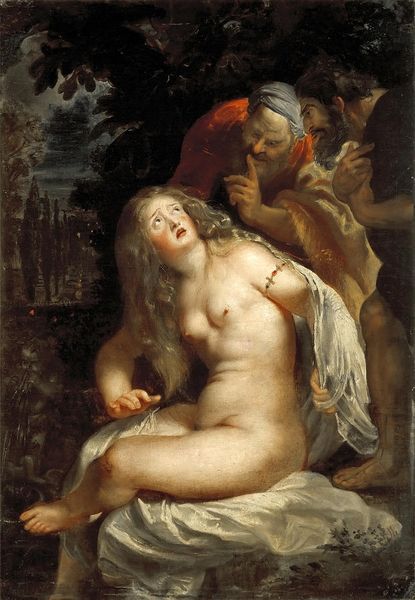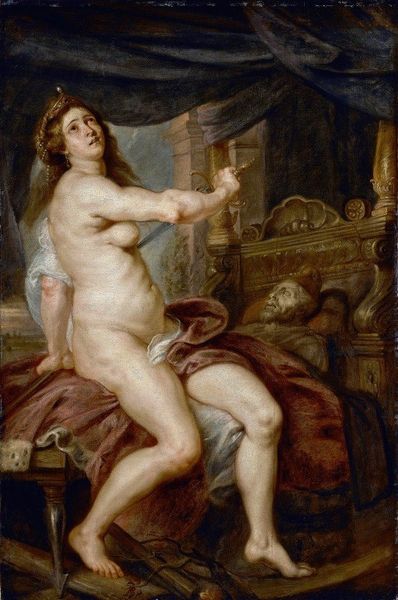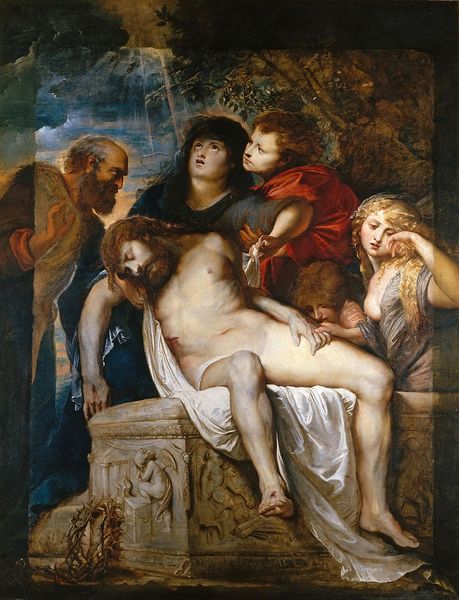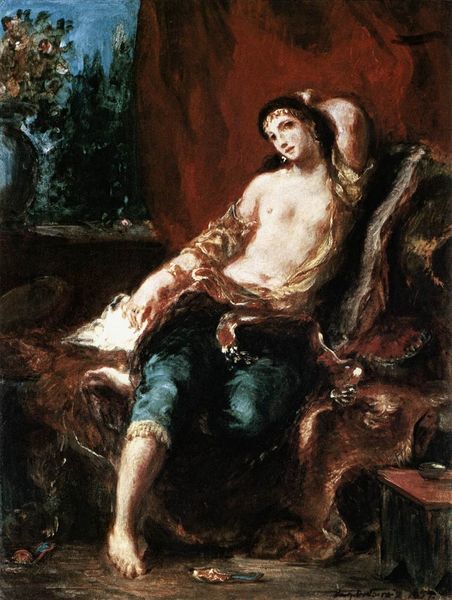
painting, oil-paint
#
portrait
#
allegory
#
baroque
#
painting
#
oil-paint
#
figuration
#
oil painting
#
mythology
#
genre-painting
#
history-painting
#
nude
Dimensions: 175 x 126 cm
Copyright: Public domain
Peter Paul Rubens painted "Bathsheba at the Fountain" on canvas during the 17th century. Here we see the biblical Bathsheba, objectified as a symbol of beauty and desire. The painting speaks volumes about the social hierarchy of its time. Rubens was working in Antwerp during the Dutch Golden Age when the status of painters and their studios was changing due to new institutional formations. His workshop epitomized the era’s entrepreneurial spirit. The exotic servant, richly dressed attendants, and even the barking dog, all signify wealth and privilege. This opulence contrasts sharply with the exploitation of people of color, reflecting the social stratification of the time. Rubens uses visual cues to comment on power dynamics, yet his depiction of Bathsheba also reveals the complex position of women within these structures. By studying historical texts, we can unpack the complicated social dynamics embedded in this image. Art doesn't exist in a vacuum; it reflects and shapes the society that produces it.
Comments
No comments
Be the first to comment and join the conversation on the ultimate creative platform.
